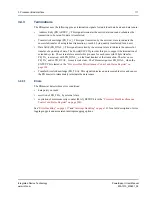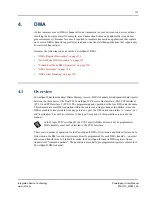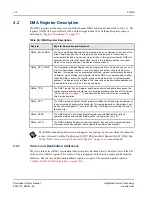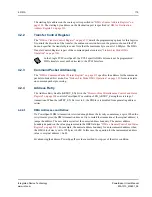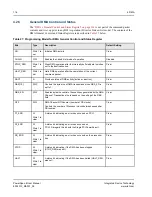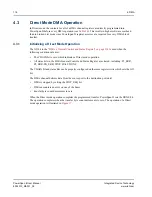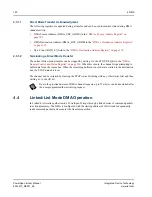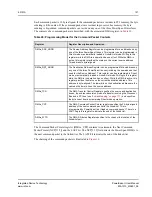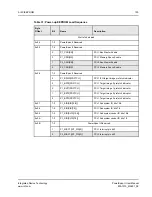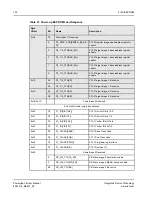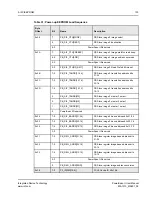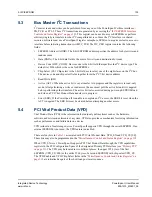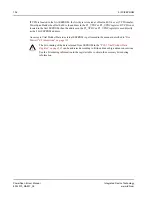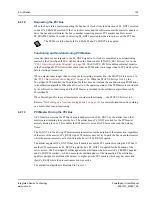
4. DMA
124
PowerSpan II User Manual
80A1010_MA001_09
Integrated Device Technology
www.idt.com
4.4.1.1
Terminating Linked-List Mode
Linked-List mode is terminated in two ways: setting the STOP_REQ bit or the HALT_REQ bit in the
“DMA x General Control and Status Register” on page 314
. When the STOP_REQ bit is set, the DMA
stops making source port requests. When all outstanding transactions are completed on the destination
bus, the STOP status bit is set. The channel can be restarted by clearing the STOP status bit (along with
any other status bits) and then writing a one to the GO bit.
Processing of the current linked-list can also be halted by setting the HALT_REQ bit. If this bit is set,
transfers specified by the current command packet are completed and then the DMA sets the HALT
status bit. Since DMAx_CPP contains the address of the next command packet, the channel can be
restarted by writing 1 to HALT bit (to clear the HALT state), the CHAIN bit (to re-initiate the
Linked-List mode), and the GO bit (to re-activate the DMA).
4.5
DMA Interrupts
The PowerSpan II DMA supports a number of interrupt sources for each channel. Individual enable
and status bits exist for each source. The status and enable bits are contained in the
Control and Status Register” on page 314
:
“Interrupt Handling” on page 145
for a complete description of the mapping and status bits for
each of these interrupt sources.
4.6
DMA Error Handling
PowerSpan II can encounter external bus errors while mastering the source, destination or command
packet ports on behalf of a DMA channel. Each DMA channel provides the following status bits in the
“DMA x General Control and Status Register” on page 314
that indicate an error condition occurred
during DMA bus master activity:
•
P1_ERR
•
P2_ERR
•
PB_ERR
Table 30: DMA Channel Interrupt Sources and Enables
Interrupt Source
Enable bit
DONE
DONE_EN
P1_ERR
P1_ERR_EN
P2_ERR
P2_ERR_EN
PB_ERR
PB_ERR_EN
HALT
HALT_EN
STOP
STOP_EN


